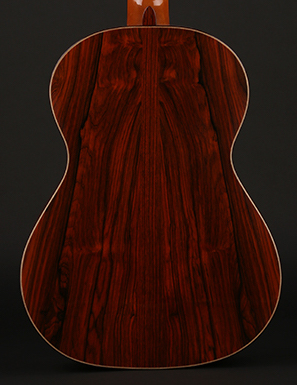The Guitar Encuentro is a yearly event organized by teachers and students of the guitar and features concerts, round table discussions and guitar exhibitions. The format seems to be somewhat flexible but I do know that we guitar-makers have attended on two previous occasions. This year we will be showing guitars at 5pm on April 23 at the Centro Albaicín in Granada.
Tag Archives: spanishguitar
Guitars Available Now in Shops
I love selling guitars to people I get to meet or communicate with by email or phone. I can customise the guitar, they get to ask all the questions that they have and it is generally a good experience for all. However, I have had very good experiences too with people who have contacted me after buying one of my guitars at a dealer. Not to mention the great relationship I have with some of the shop owners.
Here are a few guitars that are available right now (as far as I know). It is a good way to skip the waiting list and thoroughly try the guitar out before you buy.
Santos Hernández copy in Partita (Korea)
Flamenca blanca in Casa Luthier (Barcelona)
Concert 650 scale at Siccas (Germany)
Concert 650 scale at DKclassical in (Glasgow)
Flamenca negra in Guitarras de Luthier (Madrid)
CSU Summer Arts in Granada
 California State University has been collaborating with the city of Granada and the European Guitar Foundation for a number of years now. Sadly they could not do so in 2020 and 2021 but it looks like they will be back this year. Find out more about La Guitarra Española course here.
California State University has been collaborating with the city of Granada and the European Guitar Foundation for a number of years now. Sadly they could not do so in 2020 and 2021 but it looks like they will be back this year. Find out more about La Guitarra Española course here.
Pagos tuners – improved rollers
Falsifications
A colleague called me up this week to tell me that someone is using his good name to sell cheap guitars. A player sent him a message with a photo of a guitar with a label he didn’t recognize but with his name and a different address (same city though). He also noticed that the guitar had not been made by himself. This is not a new problem; I have seen factory produced guitars with a label claiming it was built by an individual maker in Granada (a non-existent person) and I have heard of falsifications too of well-known builders. Using Granada on a false label seems to be a marketing technique. This is a real problem for the guitar-maker, firstly because having an inferior product out there can seriously damage your reputation and who knows how many of these instruments there might be. A factory could conceivably produce more instruments in a short time than there are originals. Secondly, if the maker warns potential clients on a web page or social media that bad copies of his instruments are being offered it might actually scare some of them away as they might not trust that they will get the real thing.
Obviously this type of fraud is reprehensible and should be persecuted but I do wonder how easy it is to trick clients this way with all of the resources at the buyer’s disposal. These days it is rather easy to contact the maker of an instrument by phone, email or a social media account and confirm that the guitar in question was indeed made by him or her. Many of the buyers of my guitars contact me before or after acquiring a guitar from another source. And I have had a few enquiries about the authenticity of these instruments. So far I have not heard of any copies of my work. Not famous enough I guess.


